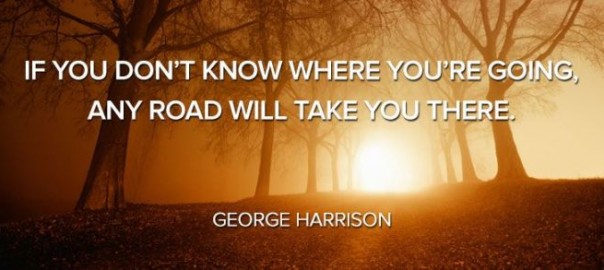
When I started reading up about Social ROI, I found it so confusing, I wondered how other business owners were managing to understand it.
I’ll be the first to admit I don’t do great with numbers or formulae. But in the process of creating their guides on ROI for social media, I found that most experts had substituted simplicity and comprehension for thoroughness and over-complication.
That was when I decided to make sense of this topic for you and me. In this article, I simplify the steps to measuring your social media ROI.
Why Social Media ROI Matters
As Lewis Carroll (and later, George Harrison) so famously stated, “If you don’t know where you’re going, any road will take you there.” If you’re running a social media campaign without taking the time to assess if you’re getting the results you want to achieve, then you really don’t know where you’re going.

Social ROI matters because it tells you where you are, where you want to go and where you should be heading if you want your marketing campaign to work. Otherwise you might as well be chucking all that time, effort and money down a very deep well.
If your business has been trying to make sense of calculating the ROI of social media, here’s where you should start.
1. Decide where you want to go
The first step towards calculating the ROI on social media is to decide where you want to go. What are your goals and business objectives?
What do you want to ultimately achieve through your social media campaign? For instance, you can choose to focus on one or more of the following goals.
- Getting more blog and website traffic
- Getting more leads and calls
- Getting more branding, reach and visibility online
- Getting a reputation as an expert (thought-leadership)
- Getting more sales and conversions
2. Plan your campaign
The social media campaign that you decide to run will ultimately depend on your goals. For example, if you decide to go after leads, you will have to create a lead magnet – an incentive for which your prospects will share their email address or phone number with you.
In this case, you could run a Twitter card campaign or a Facebook ad campaign to generate leads from these two channels immediately, while creating a blog as a long-term campaign to generate leads from organic traffic.
If you decide to go after sales on your ecommerce website, Facebook carousel ads might be the best option for short-term sales and app downloads a more long term plan to deliver content right to the buyer’s mobile devices.
You need to customize your social media campaign and creatives depending on what results you ultimately want to achieve. You also need to decide which channel you want to run a campaign on based on your audience demographics.
For instance, images will do best on Instagram, Facebook and Pinterest. But if your demographic is largely a B2B audience that is active on LinkedIn and Slideshare, you will have to rethink your creatives and campaign.
3. Track everything
The wonderful thing about online marketing is that you can track almost everything. From the content that works best on social media to the path your visitors’ take through your website, to the signups, leads, sales and follow-up, everything can be tracked, monitored and customized to optimize the customer experience.
![]()
If you’re using a CRM like Hubspot’s Inbound Marketing Software, you can customize and track your entire visitor experience. It can quickly help you create campaigns and track which ones are working and which aren’t so that you can put your time, effort and money into the campaigns that are getting the results you want.
No more do you have to wander blindly around the social media landscape, wondering which posts are working best, or use the “Post and Pray” method of sharing content.
A good marketing CRM will give you analytics on how many clicks and conversions a certain post is getting you, so you can tweak your copy and creatives. Get familiar with tools like Google Analytics, Facebook conversion tracking and strategies like A/B testing to refine your campaign further.
4. Decide the value of a lead or sale
What does the ROI of social media mean to you? Calculating ROI is ultimately about calculating the cost of a lead or sale and deciding if your marketing expenses were worth it. Only you can decide whether the ROI in social media campaigns was worth it to you.
There are a lot of social media tools, methodologies and complicated formulae to calculate social media ROI, but the only one that actually makes sense is to ask yourself whether it was it was worth spending $ 5 on a Facebook ad to gain a lead that went on to convert to hundreds of dollars worth of sales on your website.
It’s up to you, as the business owner, to decide what campaigns make sense to spend on and what you can pass on. When calculating ROI, don’t forget to factor in the cost of your social media marketing agency or, if you’re doing it in-house, the salaries, time, expense and effort it takes to go from point A to point B.
5. Set a course for success
 Once you have calculated your ROI, it’s time to analyse your results, assess if they are taking you where you want to go and tweak and fine-tune your campaigns to take you on a trajectory to social media success.
Once you have calculated your ROI, it’s time to analyse your results, assess if they are taking you where you want to go and tweak and fine-tune your campaigns to take you on a trajectory to social media success.
Like Captain Jean Luc Picard of the USS Enterprise, you need to decide if you’re on course or if you need to alter course and run with a different approach.
To get a great overview of social media and ROI, check out the infographic below from the Quicksprout blog.
Courtesy of: Quick Sprout
Did you enjoy these tips on social media ROI?
Digital & Social Articles on Business 2 Community(122)







